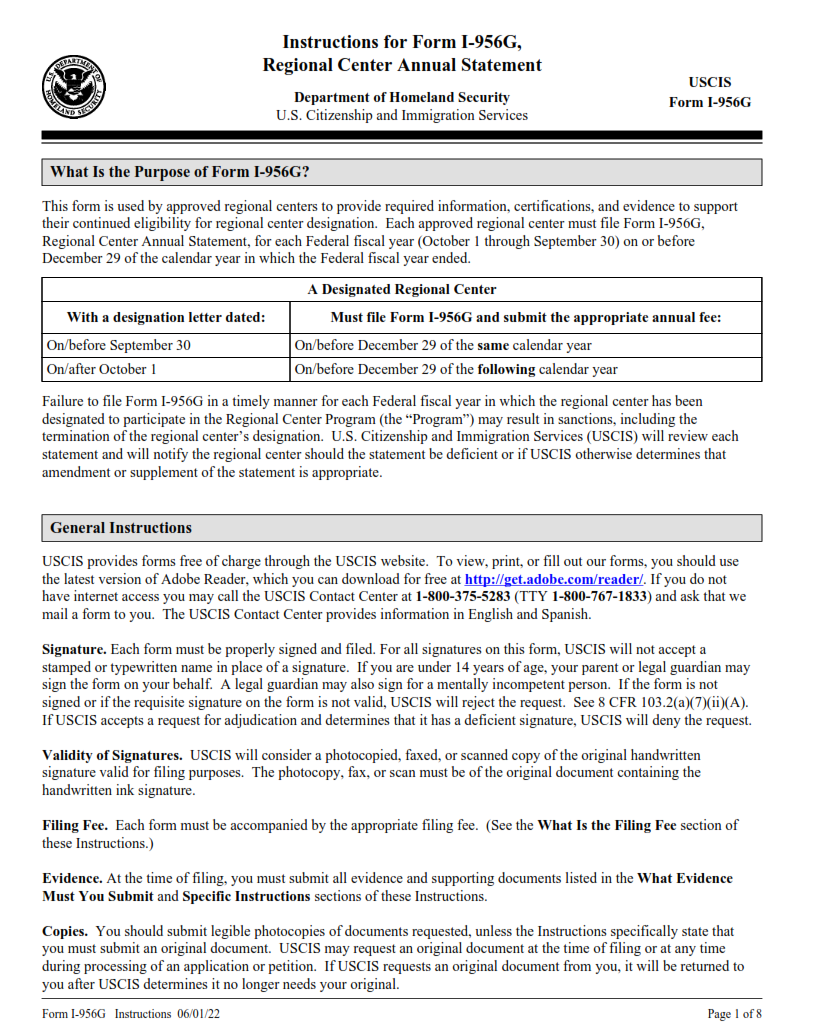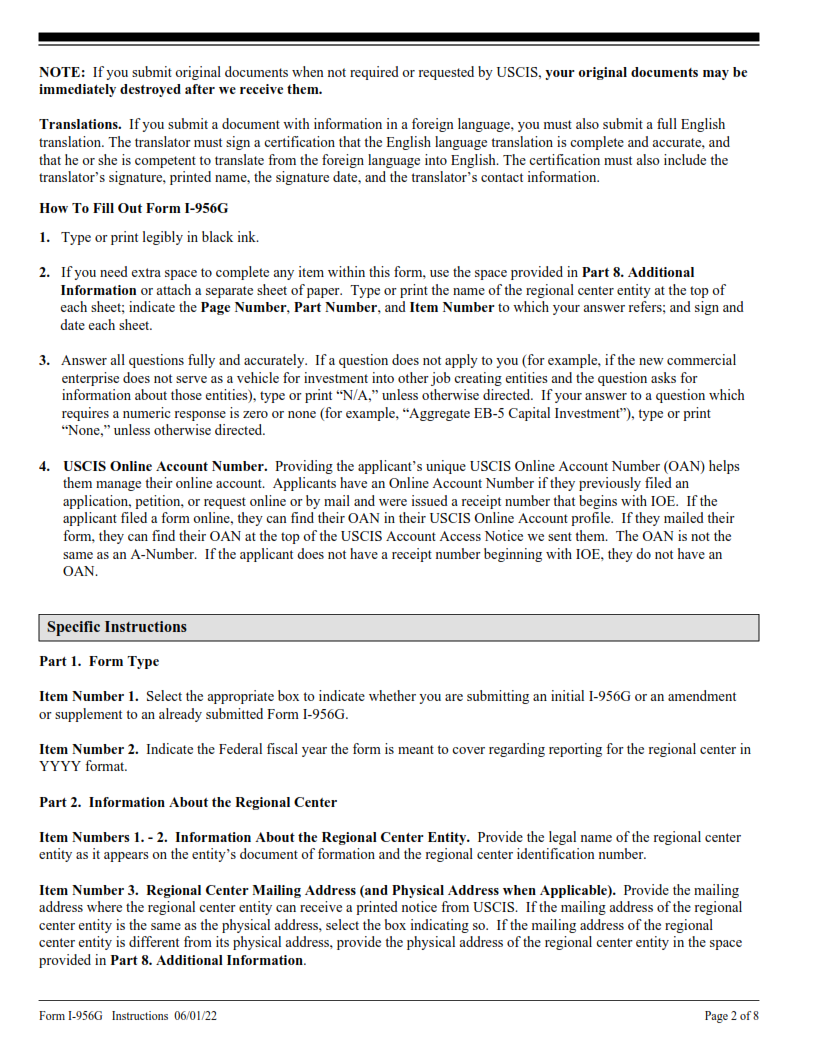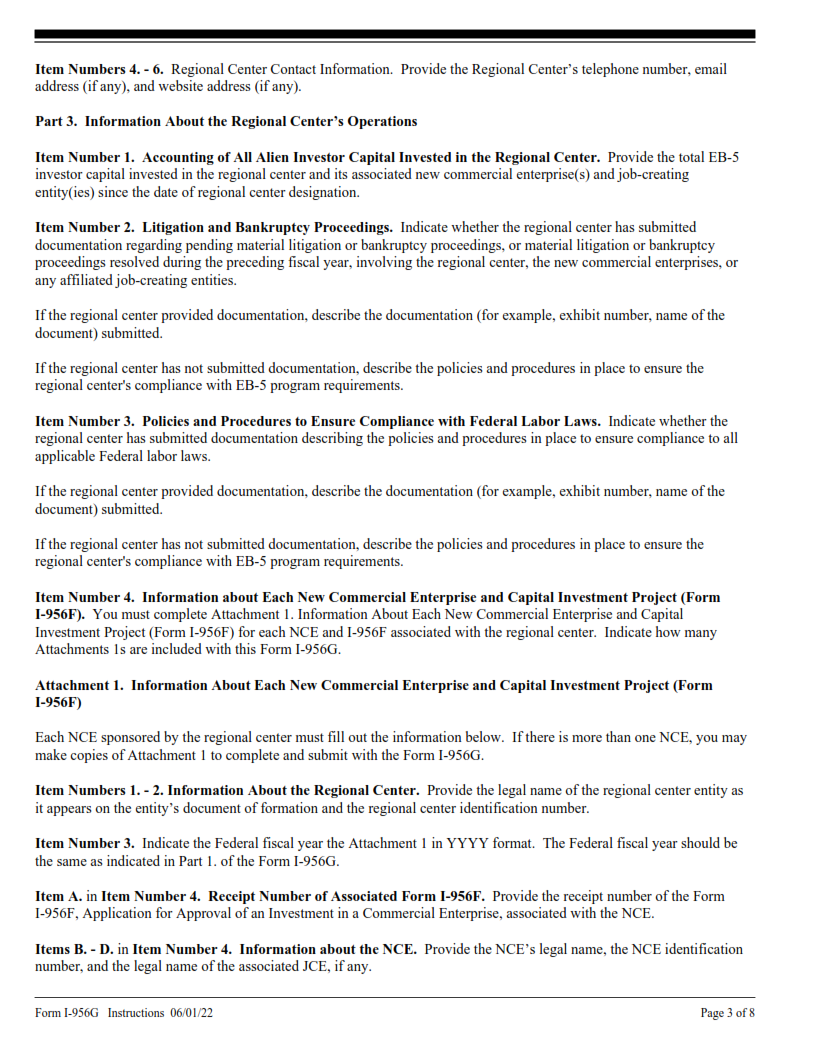FINDERDOC.COM – I-956G Form – Regional Center Annual Statement – The I-956G Form is the annual statement that Regional Centers are required to file with the U.S. Citizenship and Immigration Services (USCIS). This form provides a detailed overview of financial activity for the regional center as well as information about its investment activities, job creation activities, and other essential metrics. As such, it is an important document for regional centers to submit in order to remain compliant with USCIS regulations. This article covers key topics related to filling out the I-956G form, including what information needs to be provided and how it should be submitted.
Download I-956G Form – Regional Center Annual Statement
| Form Number | I-956G Form |
| Form Title | Regional Center Annual Statement |
| File Size | 199 KB |
| Form By | USCIS Forms |
What is an I-956G Form?
The I-956G Form is an annual statement that must be completed and submitted by all Regional Centers (RCs) to the United States Citizenship and Immigration Services (USCIS). RCs are public or private entities designated by USCIS to facilitate investments made in certain areas of the United States. The purpose of the form is to provide USCIS with data about the RC’s activities, including how it has promoted economic growth, job creation, and increased capital investment.
The I-956G Form requires information such as a description of investments made during the reporting period, updates regarding jobs created or retained due to those investments, other economic benefits provided as a result of regional center operations, target area eligibility documents for each project site and evidence that at least 10 qualifying jobs were created or retained as a result of regional center activities.
What is the Purpose of the I-956G Form?
The I-956G Form is an annual statement that must be completed by all Regional Centers (RCs) to provide the U.S. Citizenship and Immigration Services (USCIS) with information about their operations and performance. The purpose of this form is to help USCIS monitor the progress of RCs in meeting their goals and providing services for immigrants within a specific geographic region.
In order to submit an I-956G form, RCs must first complete a detailed questionnaire about their operations, including details on how they serve immigrant communities and what programs they have created or implemented to benefit those communities. This data is then used by USCIS to analyze the effectiveness of each RC in meeting its goals, as well as any potential issues that may need addressing.
Where Can I Find an I-956G Form?
The I-956G Form, also known as the Regional Center Annual Statement, can be found on the USCIS website. The form is available in both a PDF and electronic fillable version, allowing users to complete and submit their forms online. The statement is used by regional centers to report annual financial information related to their activities and operations. It must be submitted each year within 30 days of the center’s fiscal year end.
To find the form, users should go to the U.S Citizenship and Immigration Services website at www.uscis.gov/forms and search for “I-956G” in the search box provided on that page. They will then be directed to a page with instructions on how to access the form either in PDF or fillable format, whichever they prefer.
I-956G Form – Regional Center Annual Statement
The I-956G Form is the Regional Center Annual Statement that must be submitted to the US Citizenship and Immigration Services (USCIS) every year by regional centers. The form has several sections that are designed to provide information about the functioning of each regional center, including its structure and management, investment activities, job creation progress, financials and compliance.
The purpose of this form is for USCIS to ensure that all regional centers are operating in accordance with their approved business plans. It is important for these forms to be filed accurately as any errors or omissions may lead to delays in processing or even denial of applications for EB-5 visas. Additionally, it serves as a way for USCIS to track how well individual regional centers are performing in terms of job creation and investment activity.
I-956G Form Example


